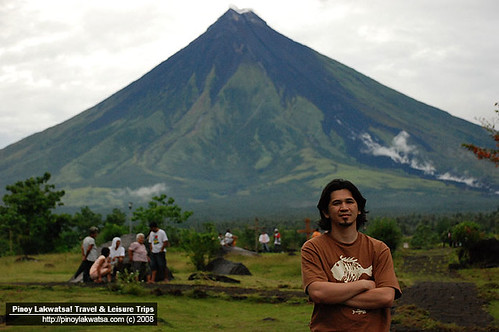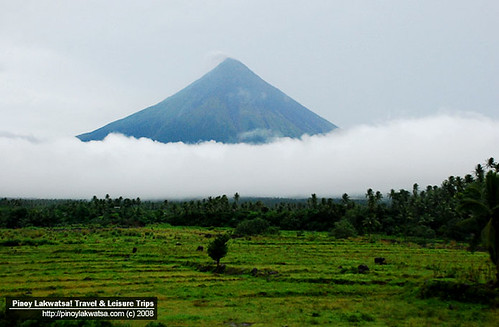Albay Tour Part 1 - Majestic Mayon Volcano
I felt that I should have written this entry earlier while she was still a nominee for the New7Wonders of Nature. Nevertheless, with its majestic beauty, it will never be late to talk about Mayon Volcano.
It was Dec 7 of last year when we landed at the Legazpi Airport. I thought I could never ever see the main reason why we visit Albay. They say, even from the airport, you could already spot Mt. Mayon. However, it was not the case when we were there. The cloudy and windy weather conditions made it difficult for us even to catch a sight of the volcano. It was too frustrating especially if you’re just as excited to take pictures of her.
"Mayon Volcano lies at the eastern portion of the province of Albay. And is about 300 km southeast of Manila. Well known for its beauty and near perfect symmetry, this active volcano is one of the tourist attractions of the country. Mayon reaches up to around 2,462 m above sea level and covers an area of 250 sq km. Its base circumference is 62.8 km encompassing the municipalities of Tabaco, Malilipot, Bacacay, Sto. Domingo, Ligao, Guinobatan, Camalig, Daraga, and Legaspi City. Mayon is classified as a strato volcano or composite cone. It consists of deposits formed basically by four major types of volcanic activity; air fall deposition, pyroclastic flows, rai-triggered debris flows, and lava flows. Air fall and pyroclastic flow deposits are composed of unconsolidated materials varying in size from ash to small boulders. These deposits result from the eruption of fragmented rocks from the crater and are transported down slope under the influence of gravity, explosion blast and the prevailing wind. Rainfall during or a long time after an eruption induces debris to flow down the slopes of Mayon Volcano to form debris flow deposits. These lahars are jumbled mixtures of rocks of varying sizes in a matrix of sand, silt and clay. Lava flows accompany most of Mayon’s eruptions. Predominantly blocky in structure, the lava flows issue mostly from the crater and sometimes from fissures that radiate from the cone."
Source: PHIVOLCS
Source: PHIVOLCS
The weather condition was much better the next day. We were both in awe when we finally get to see her on our second day. Paul kept telling me how fascinated he was by the beauty of Mayon. It’s probably one of the most dangerous volcanoes in the world, but I’m pretty sure it’s also one of the most magnificent wonders of nature.



No comments:
Post a Comment